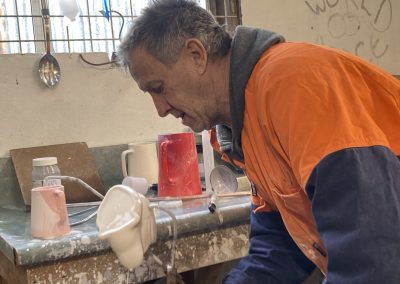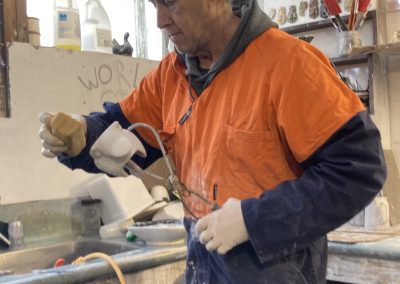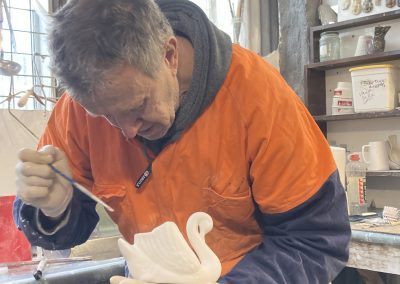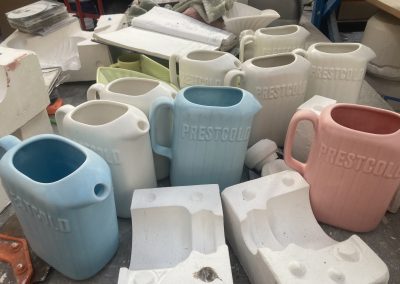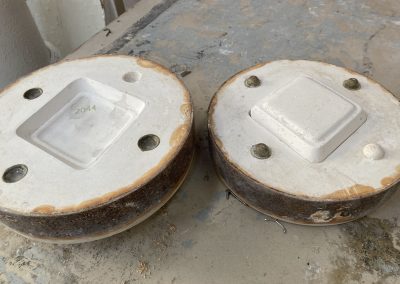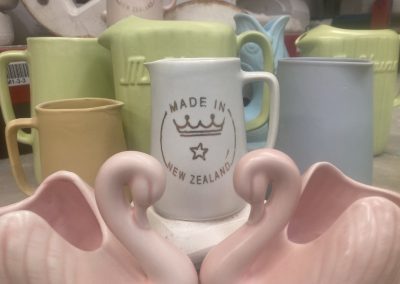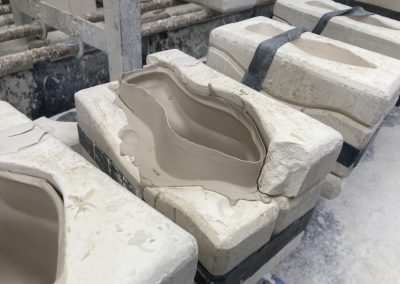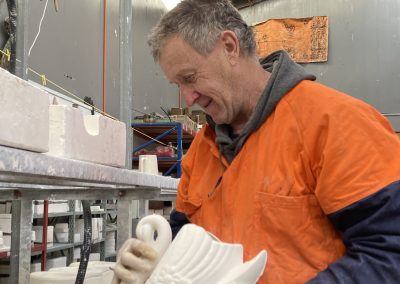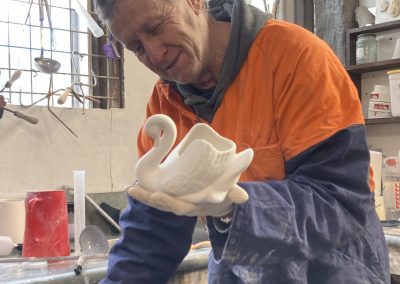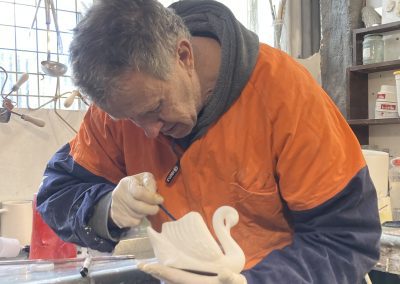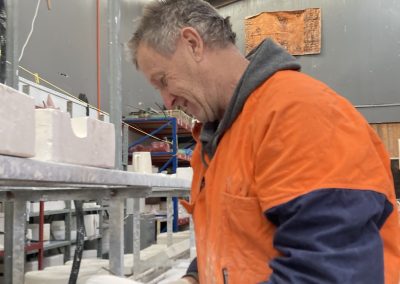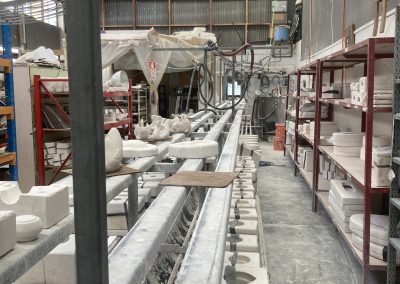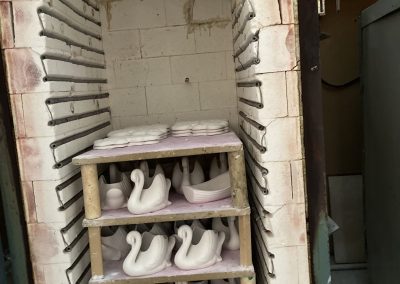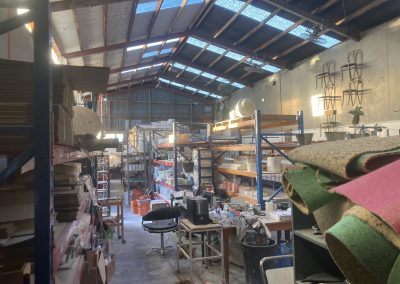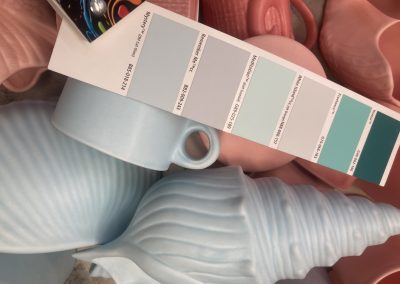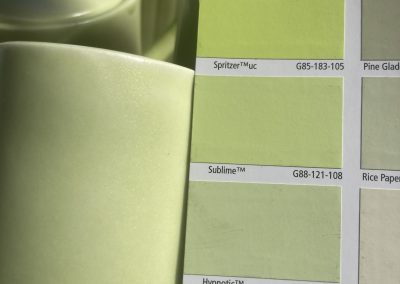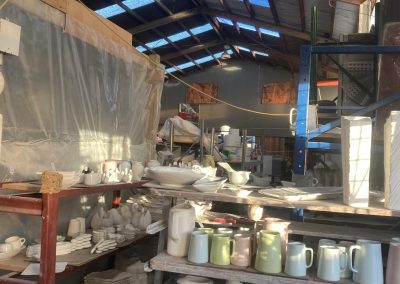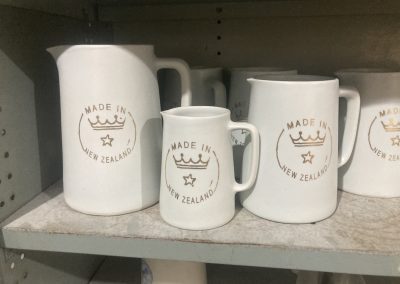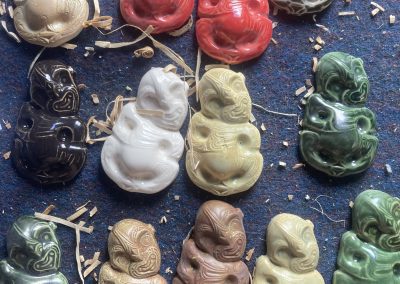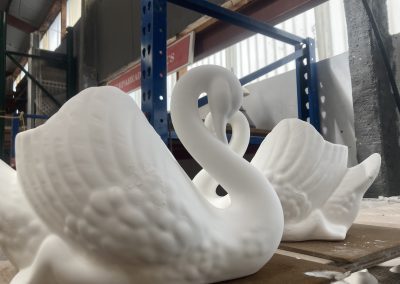
Studio NZ Made
Studio NZ Made:
This is my eighth studio, possibly the best, definitely the largest, situated in an industrial estate, in Onekawa, Napier.
I began casting and painting Ceramics in 1993 in Paihia, Northland. A lifestyle change prompted by deciding not to deal in antique ceramics full time.
The garage sales in the early 90s begin to fill with imported large retail outlet products, Crown Lynn had just closed, and the Hand Thrown pottery world had almost disappeared following the lifting of import restrictions in 1984.
It seemed correct to make, putting a collectable body of work forward, and the highly popular Hand Painted ceramic field became the focus for my study in Surface Decoration.
During a feasibility study, the market was (and is) flooded with low priced imported work of varying quality- the creation of collectable work seemed the only response when faced with nations whose low wage structure is supported by a clay industry spanning millennia!
After all there were antique shops in ancient Rome, selling Greek and Etruscan pots, hundreds of years old at that time!
Coming into ceramic making from a collectors perspective separated my studios from the norm, in the belief of making sufficient numbers to survive the wear and tear of daily use, maybe one-day being put on the shelf, and then possibly in some distant future being recognised………and then along the internet!!!!!
My study of history and Ceramics showed many small studios whose production was insufficient for a body of work to carry onwards
Niche production best describes producing a quantity of either the best art that is carefully stored or greater numbers of trendy fashion
and mass production is in the numbers we find in Asia where the minimum 10,000 unit production is impractical in New Zealand.
The current studio has a Crown Lynn casting rack, rigged so hot water can flow through the structure – a boon on cold mornings when drying the wet clay is slow!
Clay is mixed to a Slip in the Blunger – this is a mixture like mud but with more clay content that a normal earth to water ratio. The Blunger is a large blender that beats the clay particles into the water.
Store in an Agitator, the slip is kept moving 24/7 to stop it from setting hard.
Pumped into plaster moulds, this produces a first stage of the final piece that is called Leatherware.
This is fettled-cleaned of imperfections and seam lines – Fettling is a delicate process, it is also an old unique word to the clay world, like slip and blunger there are many terms from a craft that spans back to the beginning of civilization.
Brick making started the first permanent dwellings and storage spaces that were fireproof – approx. 12000 years ago, when the wheel was invented, and pots could be thrown – some thousands of years later – a hermetic seal could be made with glazes and close-fitting lids that kept water out of stored grains – once food could be stored longer than one season, cities began.
The cleaned up pieces are now bisque-fired, a low bake to 950 degrees celsius, producing a firm form that has the texture and strength of a hard biscuit.
Bisqueware is now glazed – glaze being a glass mixture that is fired onto the surface of the clay body.
Glazing is dipped, sprayed, painted, and applied in any number of ways that paint might be applied.
A Glost-firing to 1200 degrees celsius completes the piece.
If transfers are part of the design process, another firing is required after these are applied.
